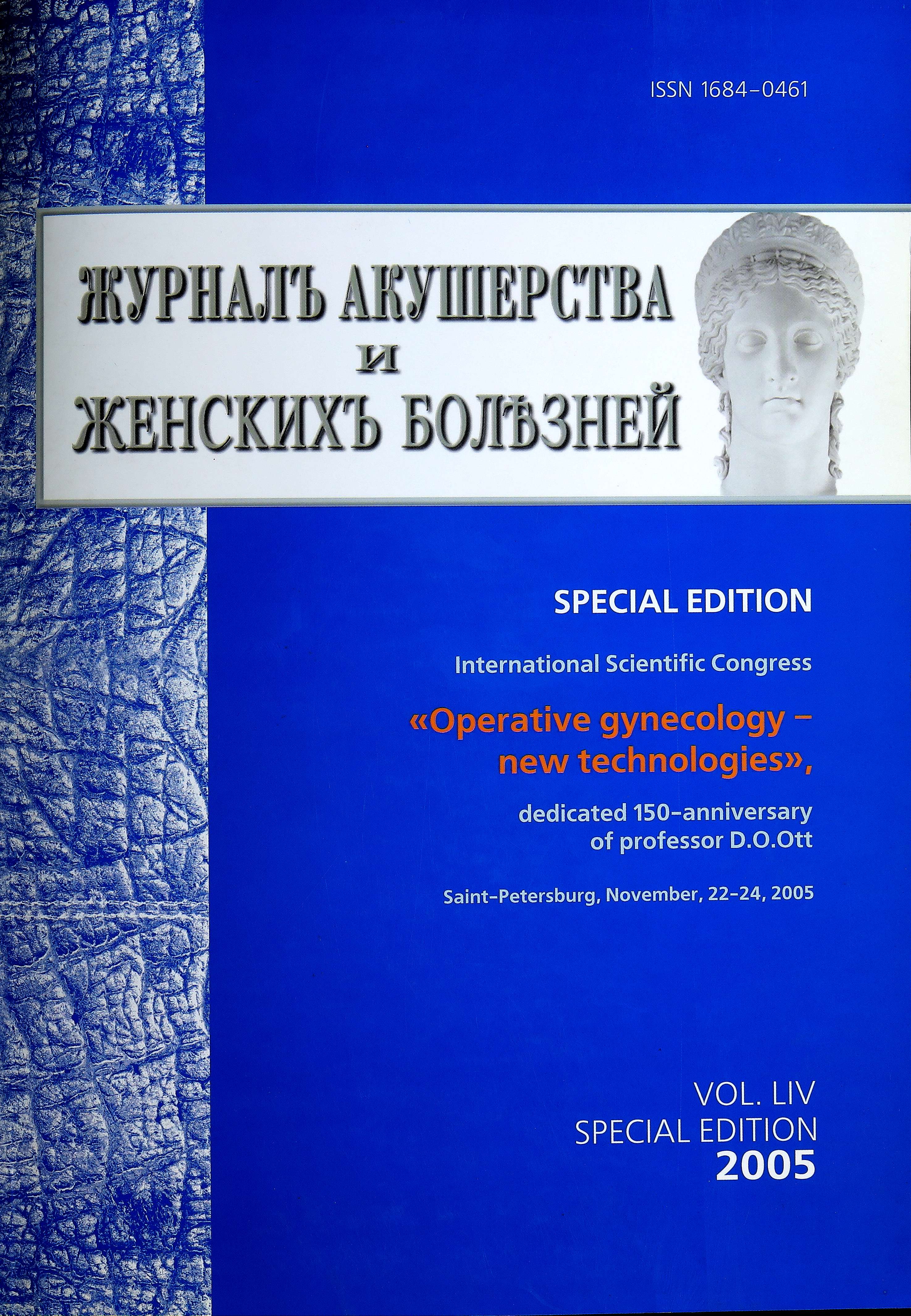The peculiarities of pregnancy and labor & delivery course in patients after laparoscopic correction of sterility
- Authors: Chub V.V.1, Shupik А.I.1, Klimov V.А.1, Anistratenko S.I.1, Schola L.I.1
-
Affiliations:
- Lugansk state medical university
- Issue: Vol 54, No 5S (2005)
- Pages: 24-25
- Section: Reviews
- Submitted: 15.11.2005
- Accepted: 06.11.2021
- Published: 15.11.2005
- URL: https://journals.eco-vector.com/jowd/article/view/87195
- DOI: https://doi.org/10.17816/JOWD87195
- ID: 87195
Cite item
Abstract
Reproductive health of the woman is the important condition of favorable prospects of each nation. The overcoming of married couple sterility is a question of state importance, but correct management of pregnancy and the choice of delivery method in pregnant after operative treatment of sterility is no less significant.
Full Text
Reproductive health of the woman is the important condition of favorable prospects of each nation. The overcoming of married couple sterility is a question of state importance, but correct management of pregnancy and the choice of delivery method in pregnant after operative treatment of sterility is no less significant.
Objective. To analyse the pregnancy and labor and delivery course in women after laparoscopic correction of sterility.
Material and methods. The analysis of peculiarities of pregnancy and labor & delivery course was carried out in 54 women, became pregnant after laparoscopic treatment of sterility.
Results. Based on laparoscopic surgery data, sterility was caused by following factors: tubal - peritoneal (49,3%), peritoneal (9,6%), complete uterine tubes occlusion (38%), including sactosalpinx (23,4%). A combination of salpingitis with endometriozis was revealed in 28,2%, with uterine fibroma - in 10,4%, with syndrom of policystic ovaries - in 16,4%, with anomalies of development of uterus - in 5,6%. During laparoscopy there was revealed the adhesive process of different degree by Hulk: I degree - 35%, II - 46%, III degree - 19%. Combined form of sterility took place in 57% of the patients, the combination of 3-4 factors was frequently observed. The pregnancy occured in 6 months after operative treatment in 54% of women, in 12 months - in 31%, and in 18 months - in 15%. The peculiarities of pregnancy course was: the high frequency of threatened abortion and preterm delivery - 44% in the Ist trimester, 35% - in the IId trimester, 21% - in the IIId trimester; early primary fetoplacental insufficiency - 32%; chronic intrauterine hypoxia - 34%, IUGR - 12%. There were not revealed reliable differences in frequency of OPH gestosis, anemia and others obstetric complications. The frequency of spontaneous abortion in the Ist trimester was 9%. Premature delivery was marked in 35% of the patients. Term delivery took place in 65%. Vaginal deliveries were observed in 62% of cases, cesarian section - in 38%. Among the indications for operative delivery the obstetric indications prevailed (86%), and were connected with fetal distress very often (69%). The common complications of labor were: primary (41%) and secondary (23%) weakness of contrsctions, progressing intranatal fetal hypoxia (10%). The characteristics was the correlation between the frequency and severity of the complications of pregnancy and labor and delivery and sterility duration, age of the parents, and peculiarities of conservative and operative treatment of sterility before pregnancy.
Conclusions. The women after operative treatment of sterility form the risk group of complicated pregnancy. The frequency of complications correlates with sterility etiological factor, duration of pathological process. It requires the careful pregravidarum preparation and specific pregnancy management from early stages
About the authors
V. V. Chub
Lugansk state medical university
Author for correspondence.
Email: info@eco-vector.com
Ukraine, Lugansk
А. I. Shupik
Lugansk state medical university
Email: info@eco-vector.com
Ukraine, Lugansk
V. А. Klimov
Lugansk state medical university
Email: info@eco-vector.com
Ukraine, Lugansk
S. I. Anistratenko
Lugansk state medical university
Email: info@eco-vector.com
Ukraine, Lugansk
L. I. Schola
Lugansk state medical university
Email: info@eco-vector.com
Ukraine, Lugansk
References
Supplementary files







